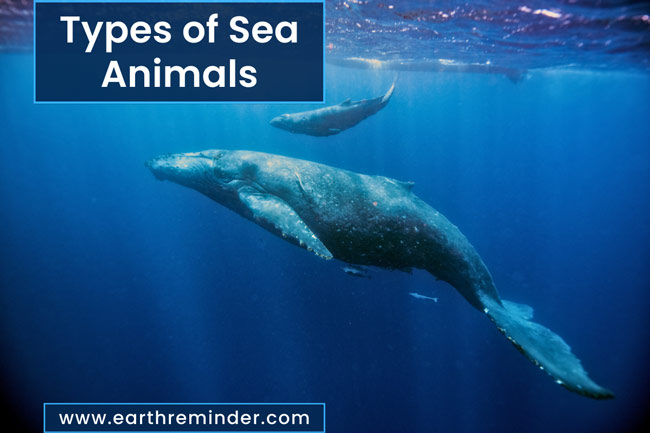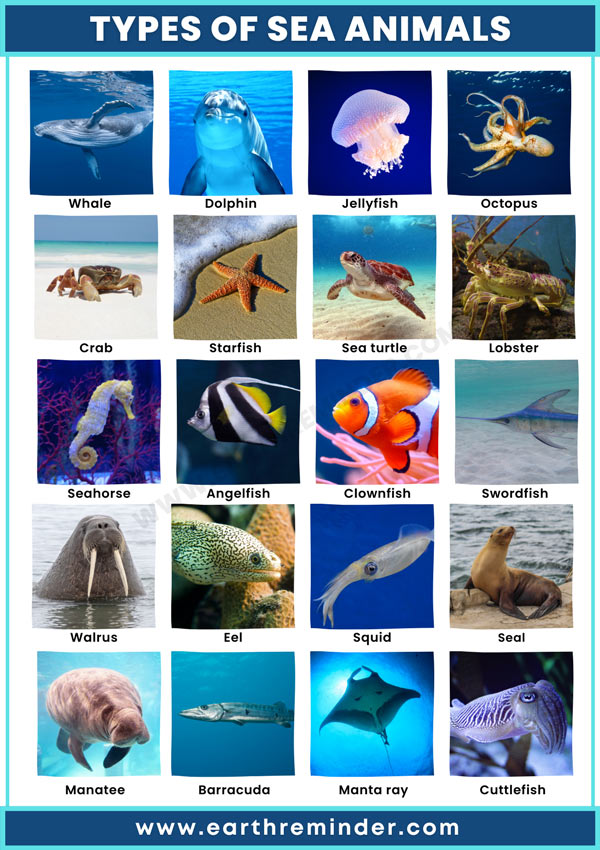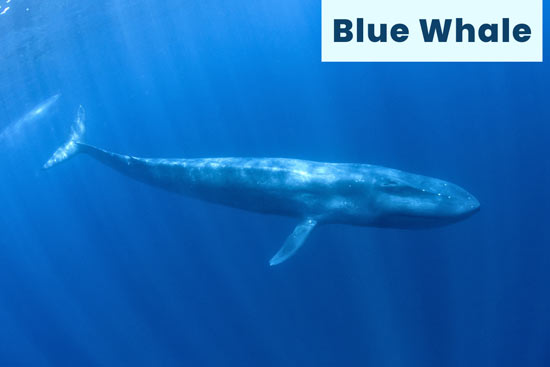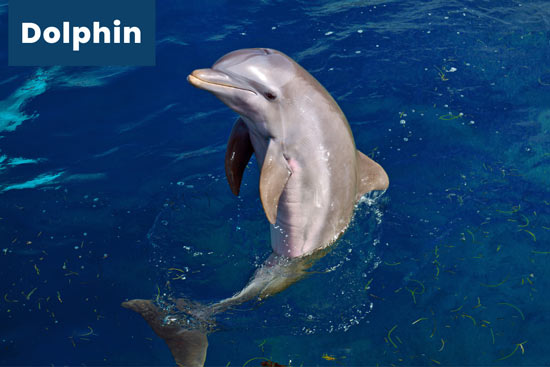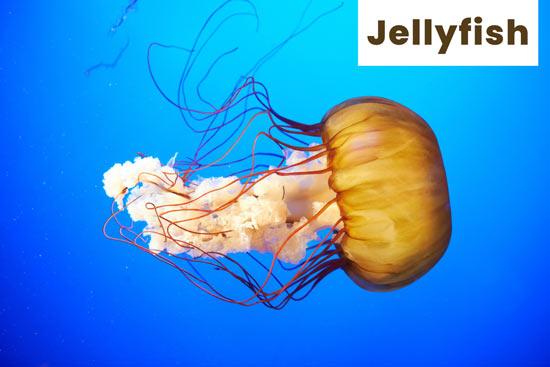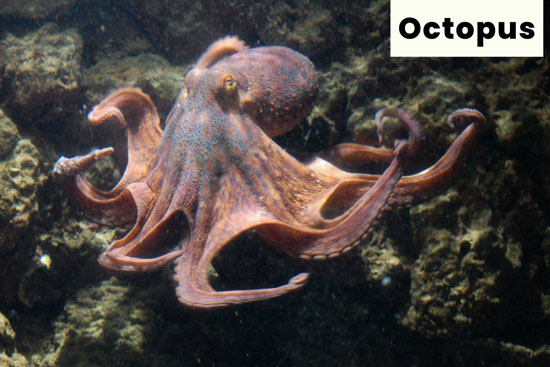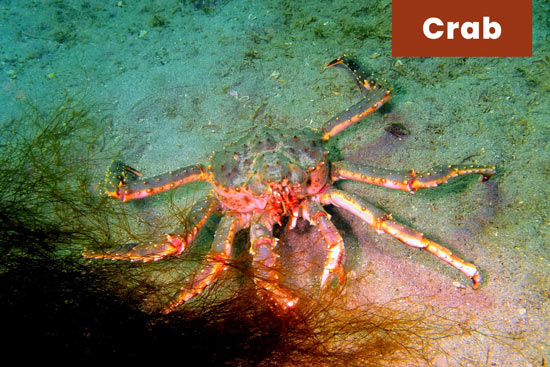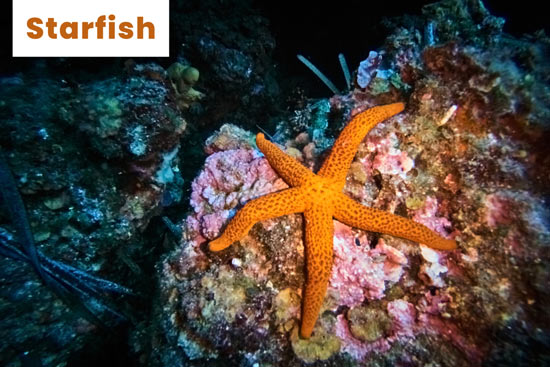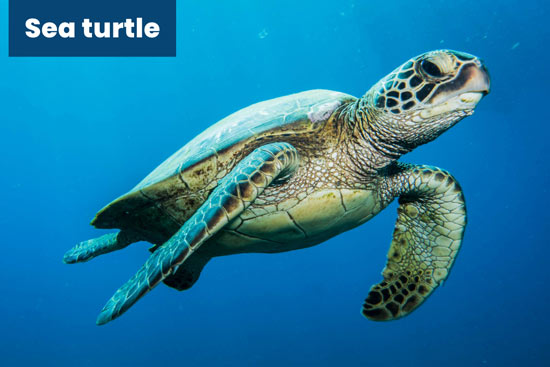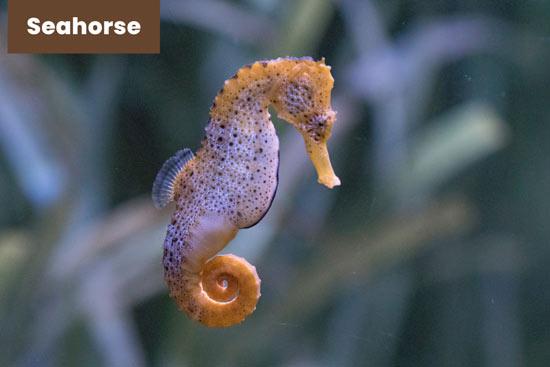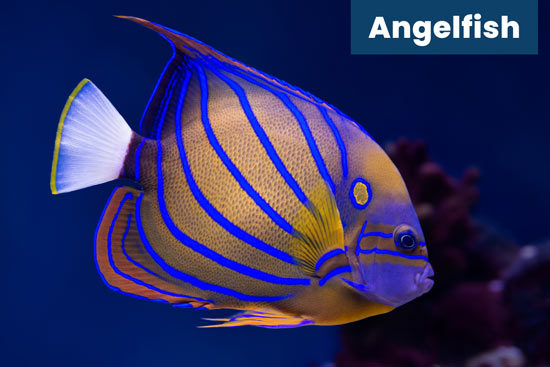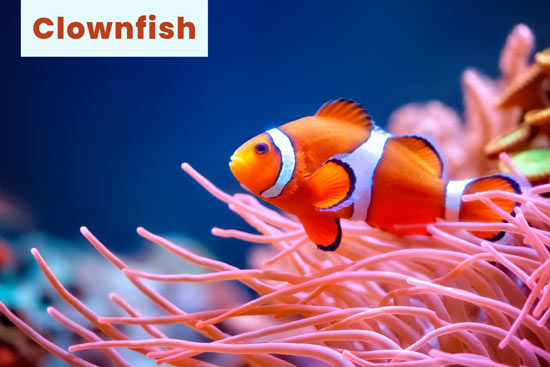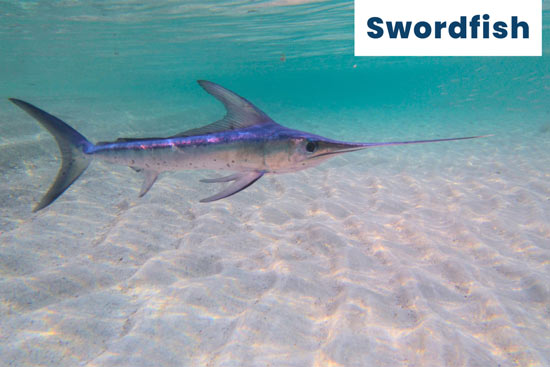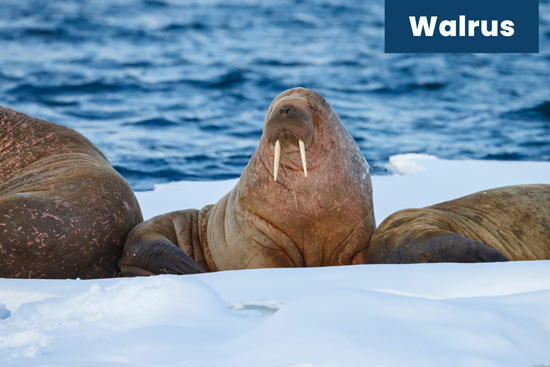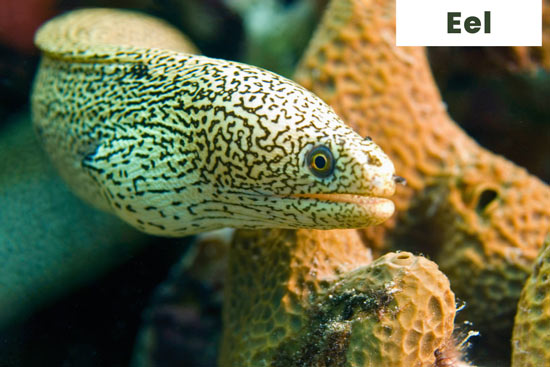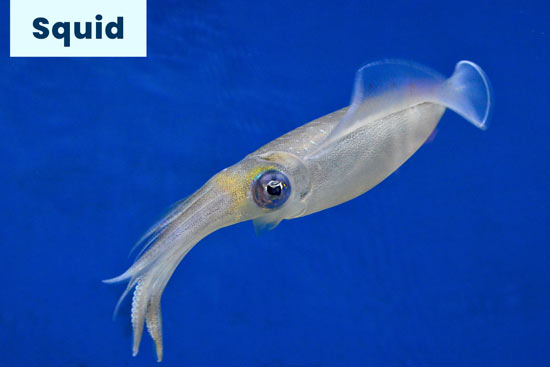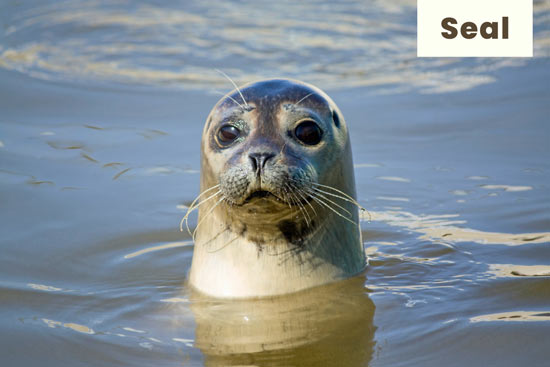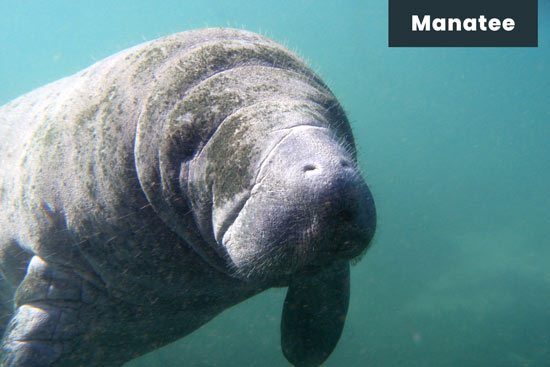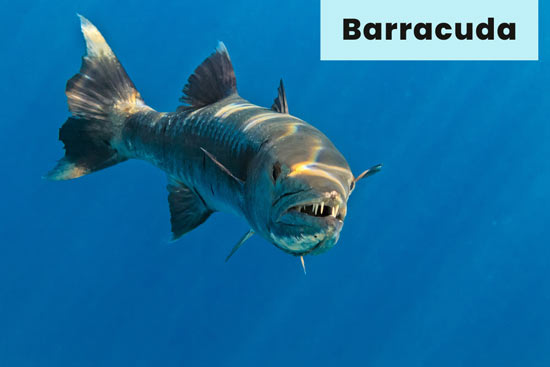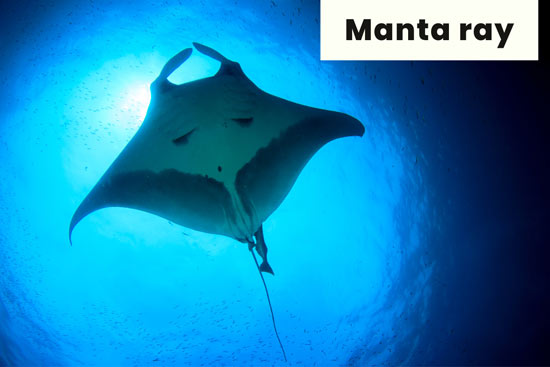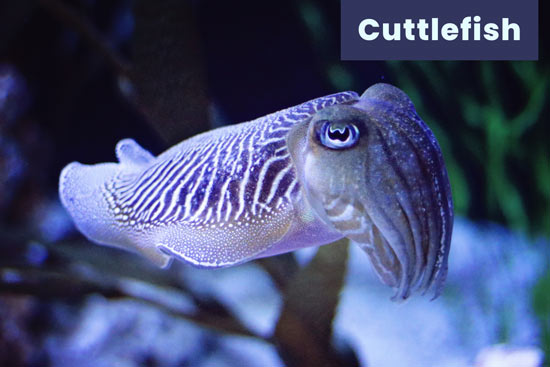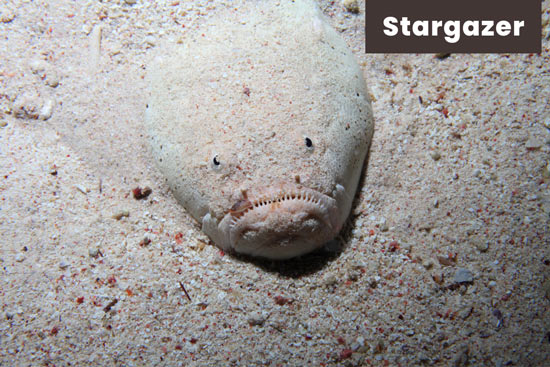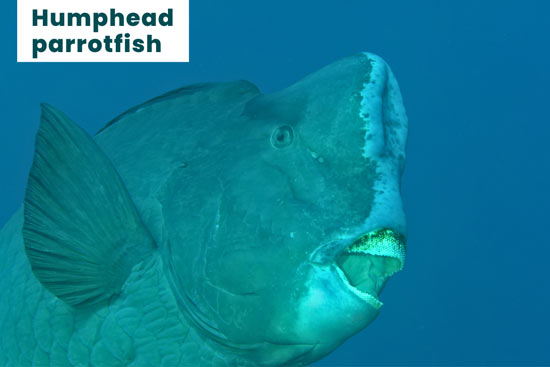22 Different Types of Sea Animals
The ocean is filled with a vast variety of animals that live in the sea. From tiny organisms to massive sea creatures, each one has special adaptations to survive in their aquatic habitats. Marine mammals like dolphins and whales are intelligent and smart. The ocean is also home to sea turtles, reptiles, crustaceans, and many more. These animals, along with plankton and jellyfish, help keep the ocean healthy. By understanding different types of sea animals, we can appreciate their diversity and connectivity, which reminds us to protect their habitats. Here, we will explore some of the most incredible sea creatures.
Table of Contents
Types of Sea Animals
There are many different types of sea animals living in the ocean. The list of mammals that live in the ocean includes whales, dolphins, squid, eels, jellyfish, octopus, starfish, crabs, sea turtles, lobsters, angelfish, seahorses, clownfish, seals, stargazer fish, manta rays, and many more. Let’s look at them in detail.
Blue Whale
Scientific Name: Balaenoptera musculus
The blue whale is the biggest mammal in the world. The blue whale, often referred to as the sulfur-bottom whale, is the largest animal to have ever lived as well as is a kind of baleen whale which weighs about 199 tons. All oceans, excluding the Arctic, are home to blue whales. They often move periodically between nesting regions of the winter and feeding grounds throughout the summer. A large portion of the blue whale’s diet consists of krill, tiny creatures that resemble shrimp. Occasionally, fish and copepods, which are small crustaceans, are also consumed.
Dolphin
Scientific Name: Delphinus
Dolphins can be found in different habitats such as ports, bays, harbors, coastal waters, deeper areas along the continental shelf, and even far offshore in the open ocean.
Dolphins, in particular, have been observed using tools, making them one of the few animal species known to do so. For example, dolphins in Shark Bay, located in Western Australia, cleverly utilize marine sponges to shield their beaks from hazardous rocks while searching for fish.
Like humans, they are intelligent beings. The brain-to-body-weight ratio of dolphins is greater than that of great apes as well. And yes, dolphins have bigger brains than humans. Dolphins eat octopuses, jellyfish, shrimp, squid, and fish.
Jellyfish
Scientific Name: Scyphozoa
Jellyfish, known as Cnidarians, derive their name from the Greek term for “sea nettle.” These remarkable creatures are incredibly adaptable, inhabiting various oceans worldwide. There are lots of jellyfish around the world, from the surface to the depths of the sea, in warm and cold water. In fact, certain types of hydrozoa jellyfish can even survive in freshwater ecosystems. As plankton, jellyfish are essentially drifters, moving along with the currents.
Most jellyfish are generally considered passive eaters, feeding on whatever crosses their path and can fit into their mouths. This includes small fish, krill, and shrimp.
Octopus
Scientific Name: Octopoda
The cephalopods, commonly known as the cephalopods, are a class of marine mollusks that includes the octopus. Cephalopoda means “head foot” in Greek. Octopuses are creatures that live in the oceans all around the world and can be found near the shores of the United States.
Octopuses usually prefer to live alone and they can be quite protective of their territory. These Marine creatures prefer to live in shallow areas of the ocean and like to hide in small gaps and spaces in rocks and coral.
Octopuses possess three hearts, two of which are only used to pump blood through the gills while the other of which circulates blood among the organs. Every octopus species produces venom, which they inject with a beak that resembles a bird and varies in toxicity. Adult octopuses eat other octopuses, small fish, crabs, clams, and other living things as food.
Crab
Scientific Name: Brachyura
Crabs are a type of sea creature with a strong shell and a pair of claws. They can be found in freshwaters, marine ecosystems, and even on land, especially in tropical places. Some crabs can live on land while others live in different bodies of water, like salty or fresh water. It doesn’t matter if the water is deep or shallow, crabs can survive in both warm and cold water. They can move in different directions, but they usually move sideways.
Crabs have ten legs because they are a type of decapod. Female crabs can lay up to 2000 eggs at once. Depending on the species, crabs eat a variety of things such as plants, animals like mollusks and worms, and even tiny organisms like bacteria. Their main food is algae, which is a type of plant that grows in water.
Starfish
Scientific Name: Asteroidea
One of the most exquisite-looking creatures in the vast ocean represents the starfish, commonly called the “sea star”. Though they do not have a brain or blood, they are capable of digesting food outside the body because of their unusual anatomy. A starfish’s circulatory system is pumped with seawater instead of blood, delivering key nutrients to its organs.
The only thing the sea stars have in common with fish is that they dwell underwater. They lack fins, scales, and gills. A sea star can only be found in saltwater. They use their suction-cupped feet to open their prey. Sea stars mainly eat animals and their favorite food is mollusks like mussels, oysters, and clams.
Sea turtle
Scientific: Chelonioidea
Sea turtles are big reptiles that live in oceans around the world, especially in tropical and subtropical areas. They can be found in various places, like the freezing waters near California or the sunny beaches of the Coral Triangle. They hunt and eat various creatures, such as anemones, sponges, barnacles, and squid. Meanwhile, green turtles, which are herbivores, mainly feed on algae and sea grasses.
Unlike regular turtles, sea turtles cannot pull their flippers and heads inside their shells. They have smooth shells and large flippers shaped like paddles, which help them swim skillfully and elegantly. When they’re in the water, they use their back flippers to steer and move around.
These ancient creatures, known for their shells and cute appearance, contribute to nutrient cycling, predator control, and water purification. Turtles help keep the environment balanced by moving at their own speed.
The majority of sea turtle species are categorized as endangered primarily because of human actions. The biggest threat to sea turtles is getting caught in fishing gear accidentally, which often results in their death. Due to this, every year world turtle day is celebrated to raise awareness among people.
Lobsters
Scientific Name: Nephropidae
Lobsters are marine crustaceans that live in the ocean depths. They like cold, salty waters, so they hide under rocks and seaweed. Lobsters have elongated bodies and strong tails that make them suitable for underwater life.
There is an interesting fact about lobsters: they are capable of swimming both forwards and backward. They curl and uncurl their tails fast when startled or alarmed.
They’re most active at night, searching for food. Recent studies revealed lobsters mostly eat fresh food rather than dead organisms like scavengers. Their diet includes crabs, mussels, fish, clams, and sea urchins. On occasion, they will even eat other lobsters as well.
Biology-wise lobsters are sometimes called “bugs” because of their resemblance to grasshoppers and ants.
Seahorse
Scientific Name: Hippocampus
Seahorses are unique little fish that look like tiny horses. They have a special appearance with a head like a horse, a pouch (brood pouch) like a kangaroo, and even a tail like a monkey.
Unlike most fish, seahorses swim upright and blend in with underwater plants to hide from enemies.
There are at least 47 kinds of seahorses, and they all live in the sea. You can find them in coral reefs, among mangrove roots, and in seagrass beds. They like warm and shallow water, but some can live in places with different levels of saltiness.
Seahorses eat small creatures like shrimp and other tiny animals. Adult seahorses eat up to 50 times a day if they can find enough food.
Angelfish
Scientific Name: Pterophyllum scalare
Angelfish are stunning fish often found in household aquariums. They can be found in marine and freshwater ecosystems. While they typically live in warm, shallow saltwater environments like coral reefs in the Atlantic, Western Pacific, and the Indian oceans, they are commonly kept as pets in aquarium tanks. Angelfish are omnivorous, which means that they consume both animals and plants.
They swim around coral reefs in shallow water in their natural habitat. The angelfish can feed at the surface or in the middle of the water, but they often hunt for worms and crustaceans at the bottom. Their diet can consist of shrimp pellets, color flakes, and Aqueon Tropical Flakes.
Clownfish
Scientific Name: Amphiprioninae
Clownfish are colorful fish that inhabit warm waters like the Red Sea and Pacific Oceans. They typically live on protected reefs or lagoons, forming a close bond with anemones.
These adaptable fish rely on a special symbiotic relationship with the anemone for their survival. Clownfish are protected by the anemone, which provides them with food scraps as well as shields them from predators. They have a varied diet consisting of small invertebrates, algae, and leftovers from anemone’s meals.
A male clownfish protects the eggs laid by a female clownfish during reproduction. It carefully protects the eggs until they hatch. A clownfish egg can hatch at any time of the year, giving it a better chance of survival.
Swordfish
Scientific Name: Xiphias gladius
Swordfish inhabit tropical and temperate waters across the Atlantic, the Pacific, and the Indian Ocean. They prefer warmer waters but can be found in a range of temperatures.
Their feeding habits are mostly nocturnal (Night time). To capture prey, they use their bill to slash back and forth, stunning or injuring their target. Swordfish have a diverse diet that includes various fish and invertebrates like squid.
Swordfish have unique organs next to their eyes. They keep their brain and eyes warm in colder water. This adaptation significantly enhances their visual capabilities.
The adult swordfish is characterized by lacking scales and teeth completely, which is different from the young swordfish, which has spines and tiny teeth as part of their identification.
Walrus
Scientific Name: Odobenus rosmarus
Walruses are easily recognizable with their noticeable mustache and long tusks. These wonderful creatures are found in two distinct Arctic regions: the Atlantic and the Pacific.
The Atlantic walrus inhabits the northern waters of Russia, Greenland, Canada, and Norway, which are covered with ice during certain seasons. On the other hand, the Pacific walrus has a broader range extending from Russia to the United States (Alaska). They can be found in the Chukchi Sea, the Laptev Sea, and the Bering Sea.
They feed at the bottom of shallow waters, consuming sea cucumbers, soft-shell crabs, clams, mollusks, worms, and snails.
Walruses use their tusks to lift themselves out of the water and onto sea ice. Also, these tusks function as breathing holes in the ice, defense against predators, and fighting with other walruses. Their tusks make them incredibly versatile in their icy habitat.
Eel
Scientific Name: Anguilliformes
Eels are long, snake-like sea creature that bend and flex their bodies easily. It’s slippery and doesn’t have scales. The majority of eels live in the open sea, but you can find them in freshwater as well. Eels are known for their long, worm-shaped bodies. Dorsal, anal, and caudal fins run around an eel’s tail tip. Eels swim by creating waves that travel along their bodies. There are around 800 species of eel that have been identified and classified.
Some eels prefer to live in shallow waters near the shore and hide in sand, mud, or rocks. Others prefer the deeper ocean parts on the continental shelves. Unlike many other fish, eels don’t have those fins near their tails. The majority of their diet consists of insects, shrimp, small fish, crustaceans, and sea urchins.
Squid
Scientific Name: Decapodiformes
Squids are invertebrate organisms belonging to the group “mollusks”. They lack bones and spinal cords. Over 300 species of squid live in the ocean, either alone or in groups called schools, squads, or shoals.
While some squid prefer to stay in shallow waters, a big-fin squid was also discovered three miles under the surface. Squid eat mainly fish and crustaceans. Also, they display cannibalistic tendencies and may eat their own kind if they’re trapped.
Also Read: Classification of Animals.
Seal
Scientific name: Pinnipedia
Seals are special water animals that can swim really well. They are semi-aquatic which means they can also live on land. They are often seen near coasts and in cold waters, including the Arctic and Antarctic. Seals eat different kinds of fish like rockfish, herring, flounder, sand lance, and salmon. They also enjoy eating squid and mollusks. People like seals because they are great swimmers and look beautiful. Seals have thick blubber layers that help them to survive in cold polar environments. This blubber also acts as insulation and a food reserve.
Manatee
Scientific Name: Trichechus
Manatees are big marine creatures called “sea cows.” They can easily swim in different types of water like fresh, salty, and mixed water. You can find manatees in canals, rivers, bays, estuaries, and coastal areas.
Manatees eat seagrass and plants that grow in freshwater lakes, springs, and rivers. They spend about eight hours each day eating seagrass and plants.
Barracuda
Scientific Name: Sphyraena
A barracuda is a big, fierce fish that likes to hunt and eat other fish. Reefs and mangroves near the shore are ideal habitats for them. You can also find them in the Caribbean, the Red Sea, the Pacific, the Atlantic, and the Indian Oceans. But it may be found all over the world throughout tropical and subtropical waters.
Barracudas have big mouths with sharp teeth that they use to catch and eat a wide variety of fish. They can even bite a large fish in half because their teeth are so strong. Some of the fish they like to eat are groupers, grunts, tunas, snappers, jacks, anchovies, mullets, herrings, and killifish.
Manta ray
Scientific Name: Manta
The giant manta ray is a very big type of ray that can be found in oceans all over the world. They like warm and moderate-temperature waters and are often seen far away from the shore in deep ocean areas. Sometimes they can also be found in places where rivers meet the ocean or in bays.
Manta rays are the largest kind of rays in the world and belong to a group of rays called Mobulidae. They eat tiny floating creatures like mysids, euphausiids, decapod larvae, tiny shrimp, and other small animals that drift in the water. According to some studies, they also occasionally eat small to medium-sized fish.
Also Read: Taxonomic Classification of Animals.
Cuttlefish
Scientific name: Sepiida
Cuttlefish are interesting creatures because of their intelligence and complex behavior. They are marine mollusks with soft bodies, large eyes, and a unique ability to change color and pattern on their skin quickly. Cuttlefish have a special internal structure called the cuttlebone that helps control buoyancy. Through this, cuttlefish can adjust their buoyancy by adjusting the gas-to-liquid ratio in their shells.
Their camouflage skills allow them to blend in with their surroundings or communicate through vivid patterns. You can also call them “The Chameleon of the Sea”. Their tentacles and toxic saliva enable cuttlefish to capture and consume small fish and other prey. Cuttlefish mostly feed on crabs and shrimp.
Stargazer fish
Scientific name: Uranoscopidae
Stargazer fish live in the deep ocean and are extraordinary creatures. It gets its name from the way it looks – it buries itself in the sand with only its eyes sticking out, so it looks like it’s gazing at the stars. Stargazers uniquely catch prey. These fish have big mouths and sharp teeth, and they hide in the sand waiting for smaller fish to swim by. And suddenly, they jump out of the sand and grab their prey. A stargazer feeds on crabs, smaller fish, and crustaceans. Even some species of stargazers can produce electric shocks to defend themselves.
Humphead parrotfish
Scientific name: Bolbometopon muricatum
The Humphead parrotfish is an enormous and colorful fish found on tropical coral reefs. It’s found all over the Pacific and Indian Oceans, from Samoa to the Red Sea. It’s also found in the Great Barrier Reef of Australia and in the Yaeyama Islands.
It has a big bump on its forehead and can grow up to 1.3 meters and weigh up to 46kg. The parrotfish uses its strong beak to eat algae and coral, and it’s really effective at making sand. Sadly, humphead parrotfish are in danger because too many people are catching them and destroying their habitats. These special fish and coral reefs must be protected.
Also Read: Marine Pollution: Types, Causes, Effects, and Prevention.
Conclusion
Oceans are full of different types of sea animals, ranging from tiny jellyfish to whales. Some of these creatures, like sharks and stargazers, might look scary, but on the other hand dolphins and sea turtles are known for being smart and lovable. People depend on sea animals for food and money in many places around the world. Human activities like overfishing, pollution, and climate change put these creatures’ survival and health at risk. Protecting our oceans and their creatures is our duty. Conservation methods such as marine reserves, fishing regulations, and pollution control can help these animals survive. Taking action now will prevent further damage to our oceans. Every small step counts.
